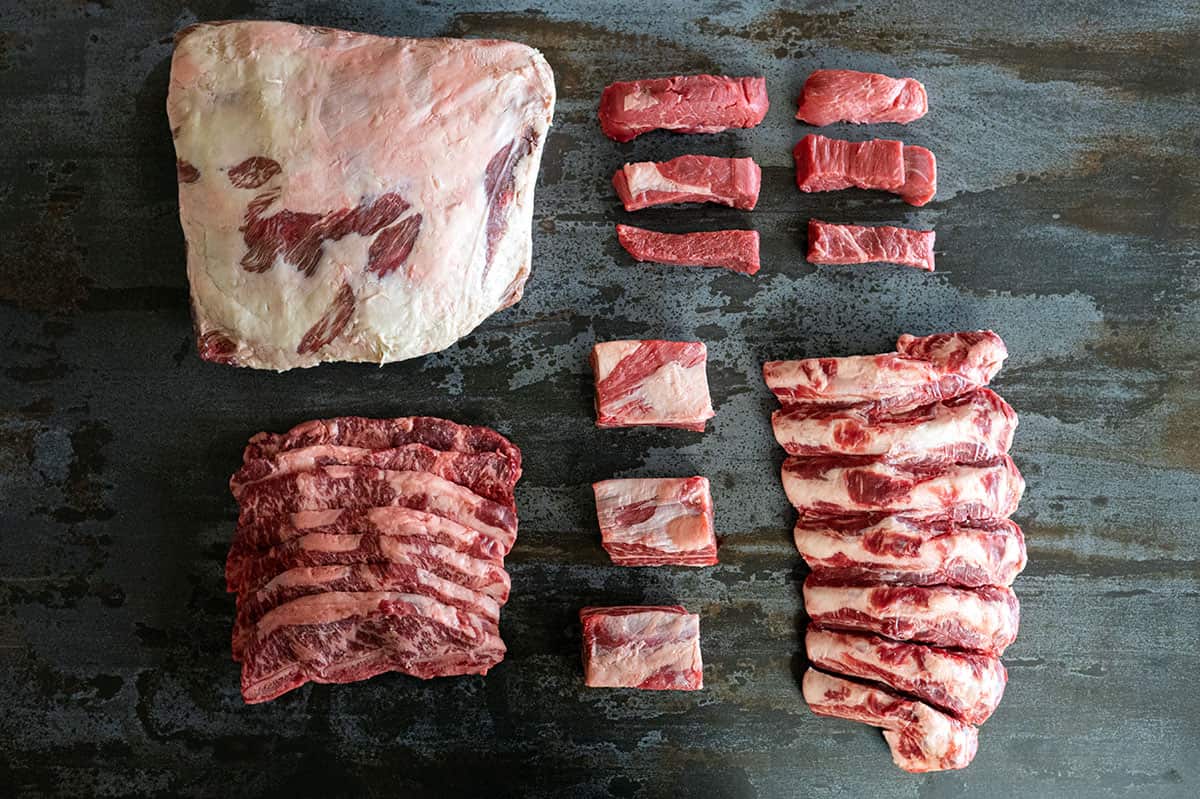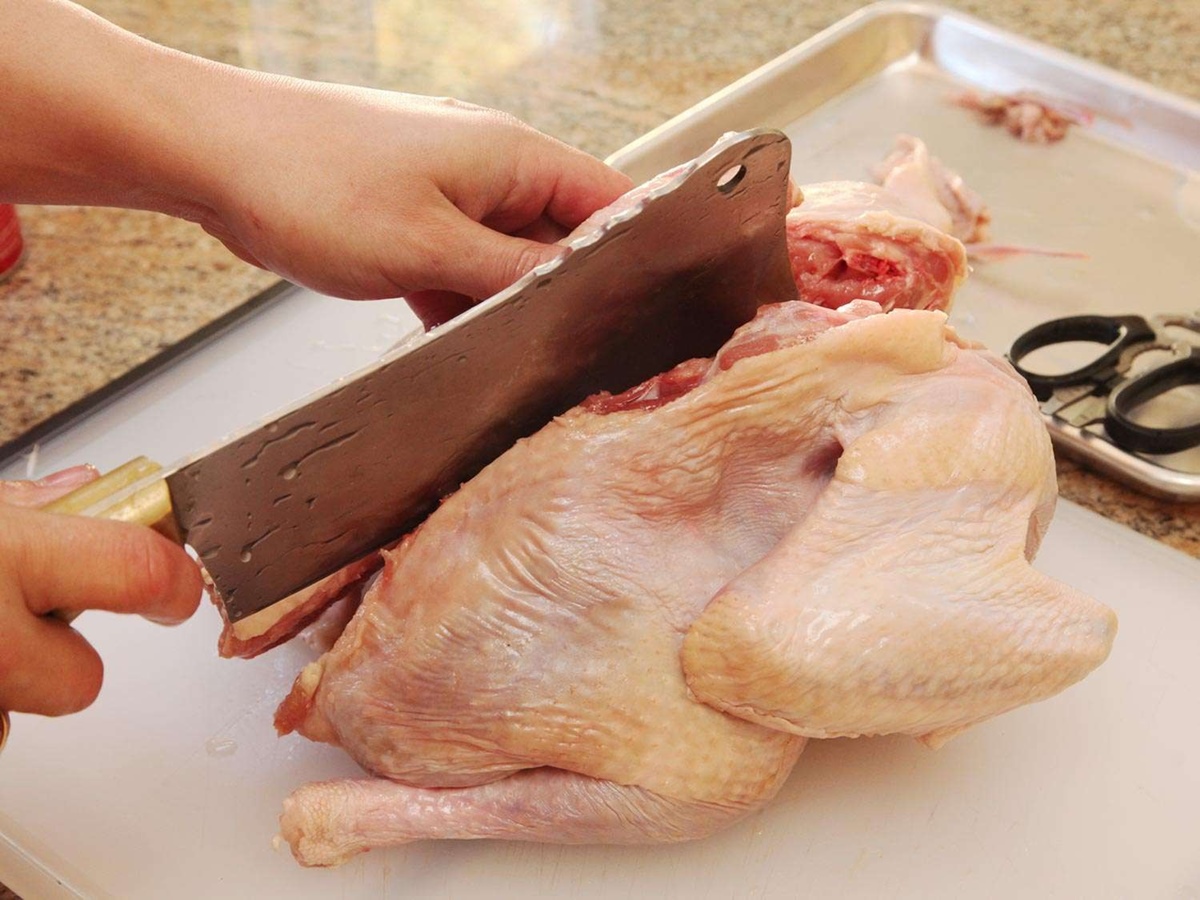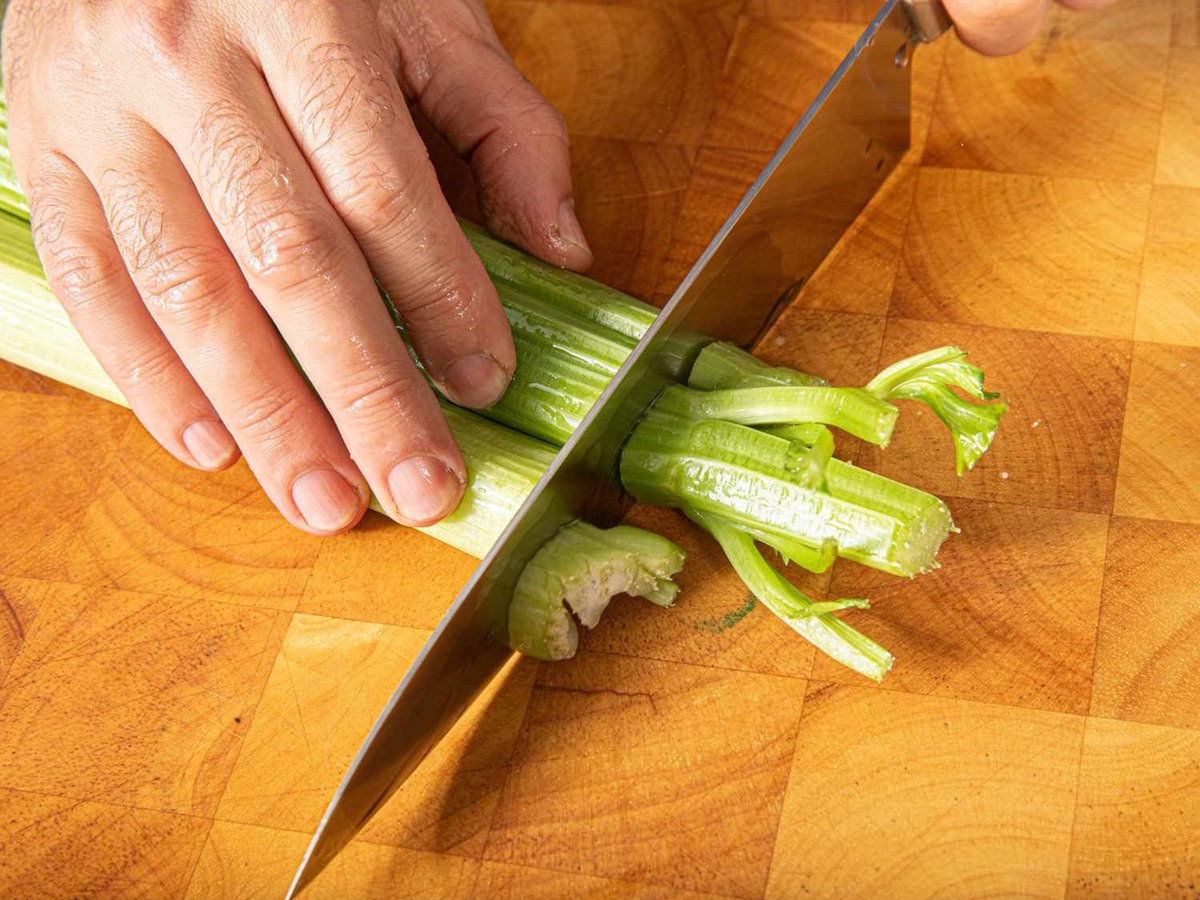Cutting sausage links correctly enhances their flavor and texture, making every bite a delight. Whether grilling, frying, or adding to recipes, the method matters. For perfectly cooked pieces, start with a sharp knife. A gentle sawing motion, rather than forceful chopping, preserves the casing and keeps the meat intact. Diagonal cuts increase the surface area, promoting even cooking and caramelization. Chilling the links slightly before slicing can make the task easier, ensuring clean, precise cuts. With these tips, preparing sausage links becomes an effortless task, elevating your dishes to new heights of deliciousness.
Essential Ingredients for Cutting Sausage Links
- Sharp knife
- Cutting board
- Sausage links
- Paper towels (optional for handling)
Necessary Tools for Slicing Sausage Perfectly
-
Sharp Chef's KnifeEnsures precise cuts without tearing the casing.
-
Cutting BoardProvides a stable surface, reducing the risk of accidents.
-
Kitchen ShearsOffers an alternative cutting method, especially useful for snipping between links.
-
Paring KnifeIdeal for making smaller, more intricate cuts if needed.
-
Meat ForkHelps hold the sausage steady while cutting, for safety and accuracy.
-
Paper TowelsUseful for patting sausages dry to ensure a good grip and prevent slipping.
-
TongsCan be used to rotate and arrange sausages without direct hand contact, maintaining hygiene.
For evenly cooked dishes, slice sausage links before cooking. Use a sharp knife, cut diagonally to increase surface area, enhancing flavor absorption and ensuring a more appealing presentation on the plate.
The Art of Cutting Sausage Links: Why It Matters
Cutting sausage links properly ensures they cook evenly, enhancing flavor and texture. This technique prevents casings from bursting, maintaining juices and spices inside, crucial for a succulent bite. Precise cuts also improve presentation, making dishes visually appealing. Mastery in slicing sausages elevates cooking skills, contributing to better-tasting meals.
Understanding how to cut sausage links influences cooking outcomes significantly. It allows for efficient heat distribution, ensuring each piece is cooked thoroughly without drying out. Skilled slicing adapts to various recipes, optimizing culinary experiences. This knowledge not only boosts confidence in the kitchen but also inspires creativity in meal preparation.
A Step-by-Step Guide to Cutting Sausage Links
Step 1: Choose the Right Knife
- Select a sharp chef's knife or serrated knife for precision and safety.
Step 2: Secure the Cutting Board
- Place a damp cloth under your cutting board to prevent slipping.
Step 3: Position the Sausage
- Lay sausage links side by side on the cutting board, ensuring they are not overlapping.
Step 4: Decide on the Cut Type
- Determine if you want slices, diagonals, or chunks for your dish.
Step 5: Hold the Sausage Firmly
- Use your non-dominant hand to grip the sausage, keeping fingers curled inward to avoid cuts.
Step 6: Begin Cutting
- For slices, cut directly down with a slight sawing motion.
- For diagonal cuts, angle the knife and slice evenly.
- For chunks, slice the sausage in half, then cut each half into the desired size.
Step 7: Maintain Even Thickness
- Aim for consistent thickness to ensure even cooking, typically 1/4 to 1/2 inch thick.
Step 8: Clean as You Go
- Wipe the knife blade with a clean cloth if sausage residue builds up.
Step 9: Store or Cook Immediately
- Use the cut sausage right away or store in a sealed container in the refrigerator.
Mastering the Art of Sausage Slicing
Cutting sausage links correctly enhances their flavor and texture, making your dishes even more delicious. Remember, sharp knives are your best friend in the kitchen, ensuring clean and precise cuts. Whether you're aiming for coins, diagonals, or butterfly cuts, each technique has its place in different recipes. Practice makes perfect, so don't shy away from experimenting with various methods to find what works best for you and your meals. With these tips and tricks, you'll elevate your cooking game, impressing guests and satisfying taste buds. So, grab that sausage link, choose your cutting technique, and start slicing your way to culinary excellence.
For those eager to test their sausage link cutting skills, a good start is the Sausage and Mushroom Pizza. This dish allows you to practice evenly slicing sausage links for perfect topping distribution. Moving on, the Sausage and Cheese Omelette is another excellent choice; the finely chopped sausage blends seamlessly with the eggs and cheese. The Sausage and Potato Skillet offers a hearty option where uniform sausage pieces cook evenly with the potatoes. For a nutritious meal, try the Sausage and Spinach Frittata, where precise sausage cuts elevate the dish. Finally, the Sausage and Egg Breakfast Burrito is perfect for those on the go, with neatly cut sausage adding flavor and texture. These recipes not only help hone your cutting technique but also provide a variety of delicious meals to enjoy.
All Your Questions About Cutting Sausage Links Answered
How do you properly cut sausage links without squishing them?
Ah, that's a common kitchen conundrum! To avoid squishing your sausage links, use a sharp knife. A dull blade is often the culprit behind crushed sausages. Also, try not to saw back and forth. Instead, use a single, confident slice. Holding the sausage firmly but gently can also help maintain its shape.
What's the best knife for cutting sausage links?
For cutting sausage links, a serrated knife works wonders. Its saw-like edge grips the casing, allowing for a clean cut without applying too much pressure. A sharp chef's knife is also a good choice for more precise cuts.
Should sausage links be cooked before cutting?
Cooking sausage links before slicing can make the process easier, especially if you're aiming for neat, uniform pieces. Cooked sausages are firmer and less likely to fall apart. However, for certain recipes, you might need to slice them raw. In that case, chilling the sausages slightly can firm them up, making slicing a breeze.
Is there a trick to cutting sausage links without the filling oozing out?
Sure is! To keep the filling from making a break for it, chill your sausage links before slicing. Cold sausages are less likely to ooze. Also, ensure your cuts are quick and clean. A serrated knife can help achieve this by reducing the need to press down hard.
Can you cut sausage links on a bias?
Cutting on a bias (diagonal) not only gives your sausage links an appealing look but also increases the surface area, which is great for browning. Hold your knife at a 45-degree angle to the sausage and slice. This method is perfect for adding a touch of elegance to your dish.
What's the safest way to cut sausage links?
Safety first, always! Secure your sausage links by placing them on a non-slip cutting board. If you don't have one, lay a damp kitchen towel underneath your board to prevent it from sliding. Keep your fingers tucked away and use a sharp knife to minimize the effort required, reducing the risk of slipping.
How do you keep sausage links from curling when you cut them?
Sausages tend to curl if one side cooks faster than the other. To prevent this, make shallow cuts along the length of the sausage links before cooking. This technique helps them cook evenly, keeping them straighter, whether you're grilling, frying, or baking.
Was this page helpful?
Read Next: How To Cut A Cornish Hen In Half











